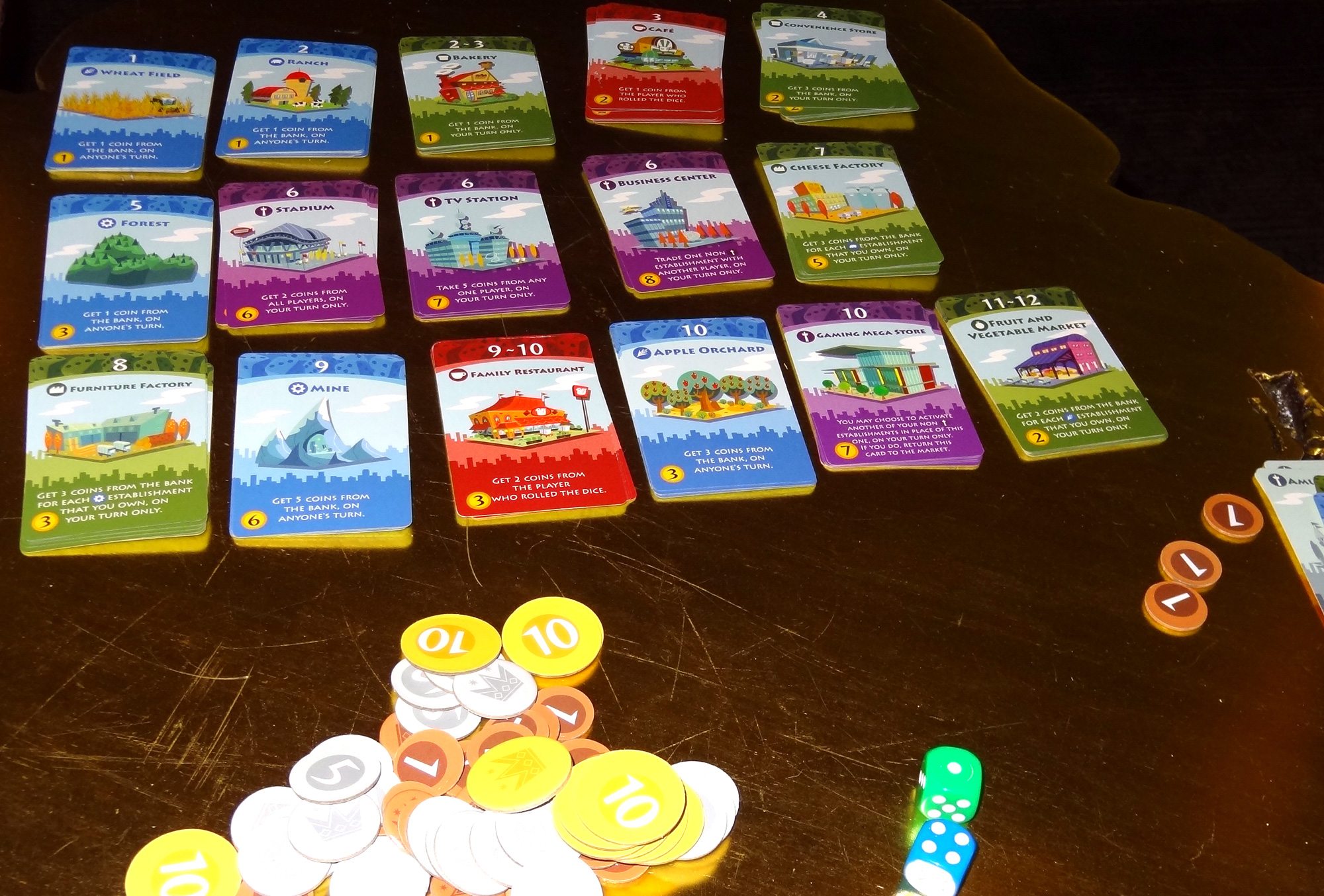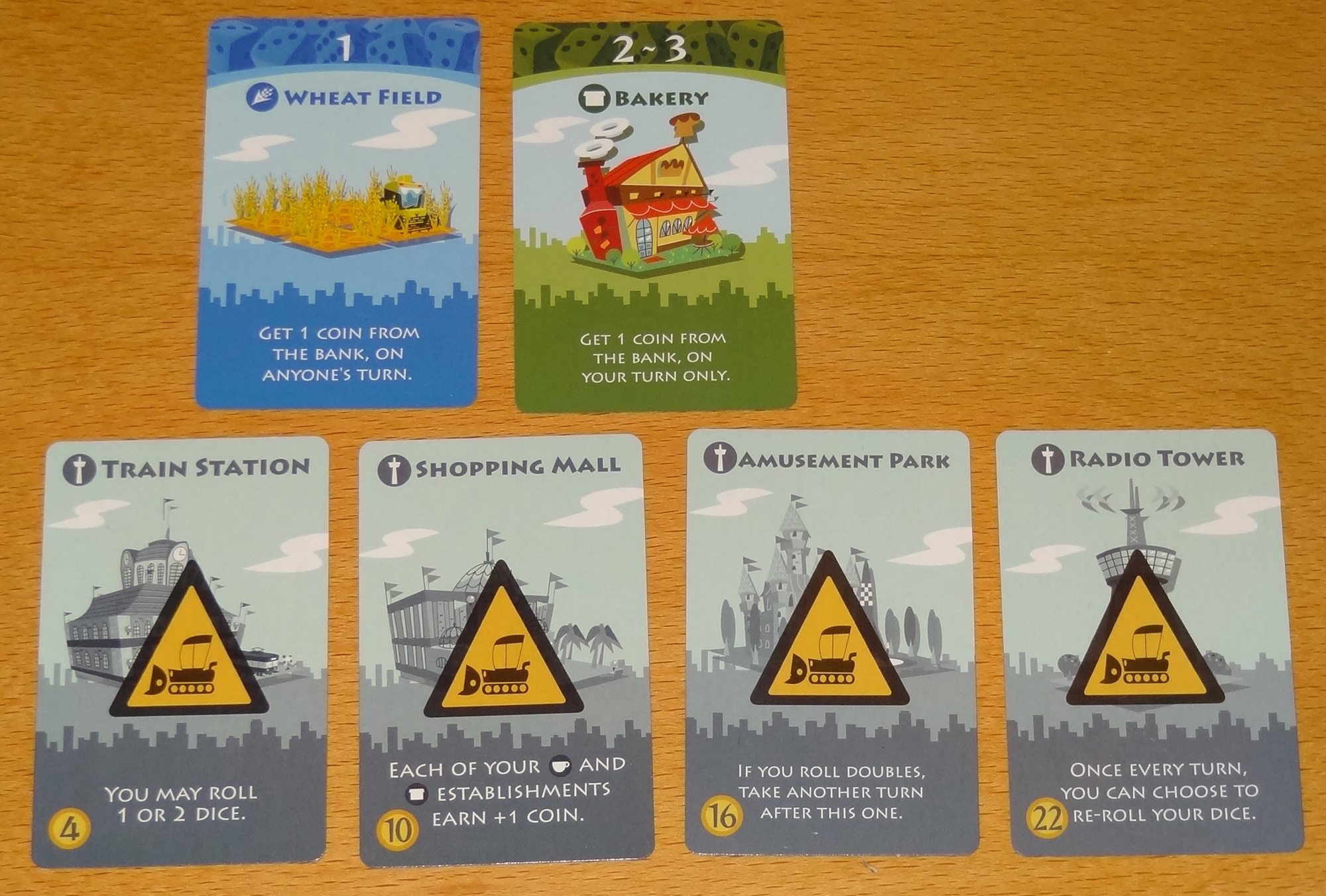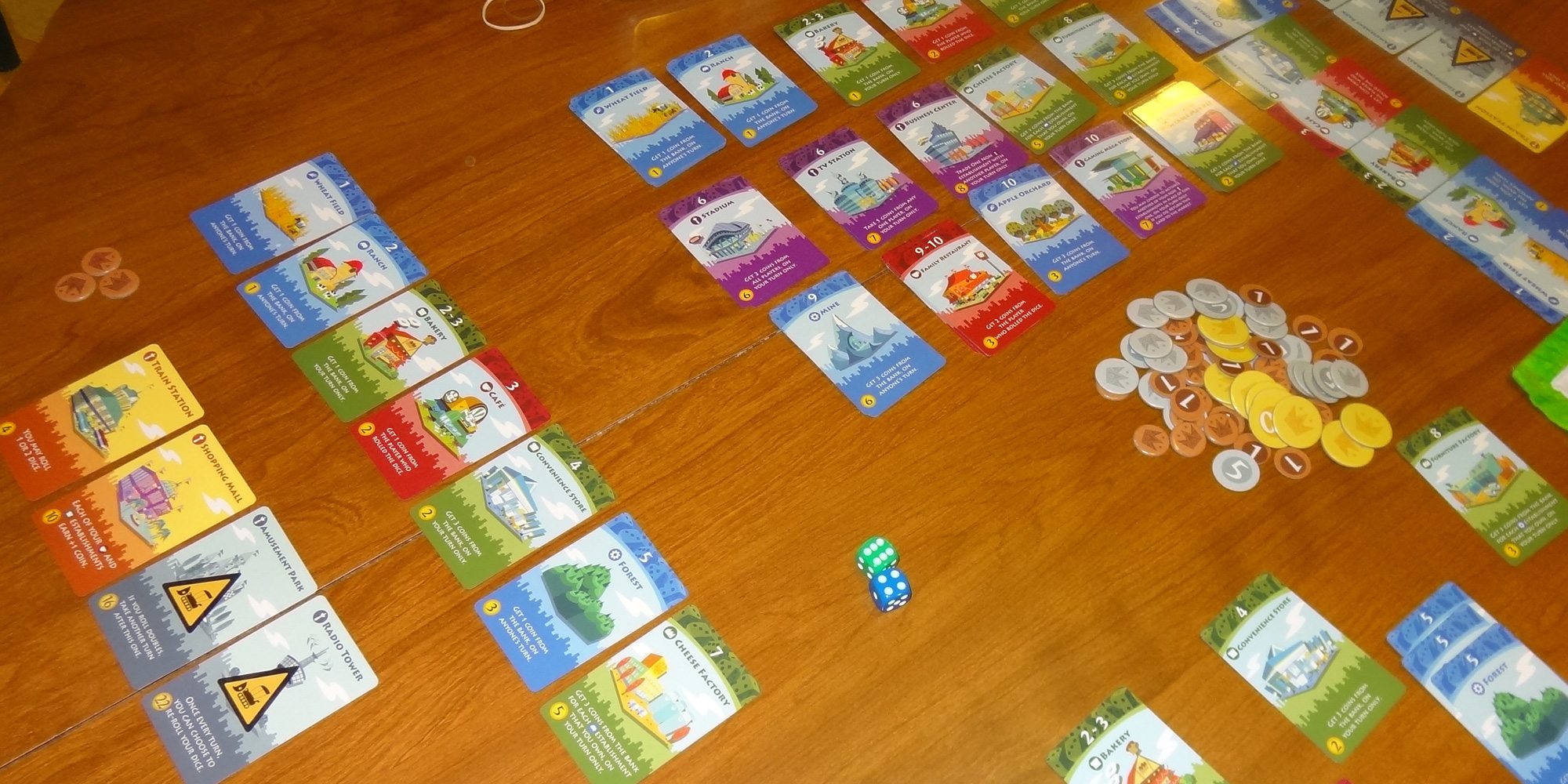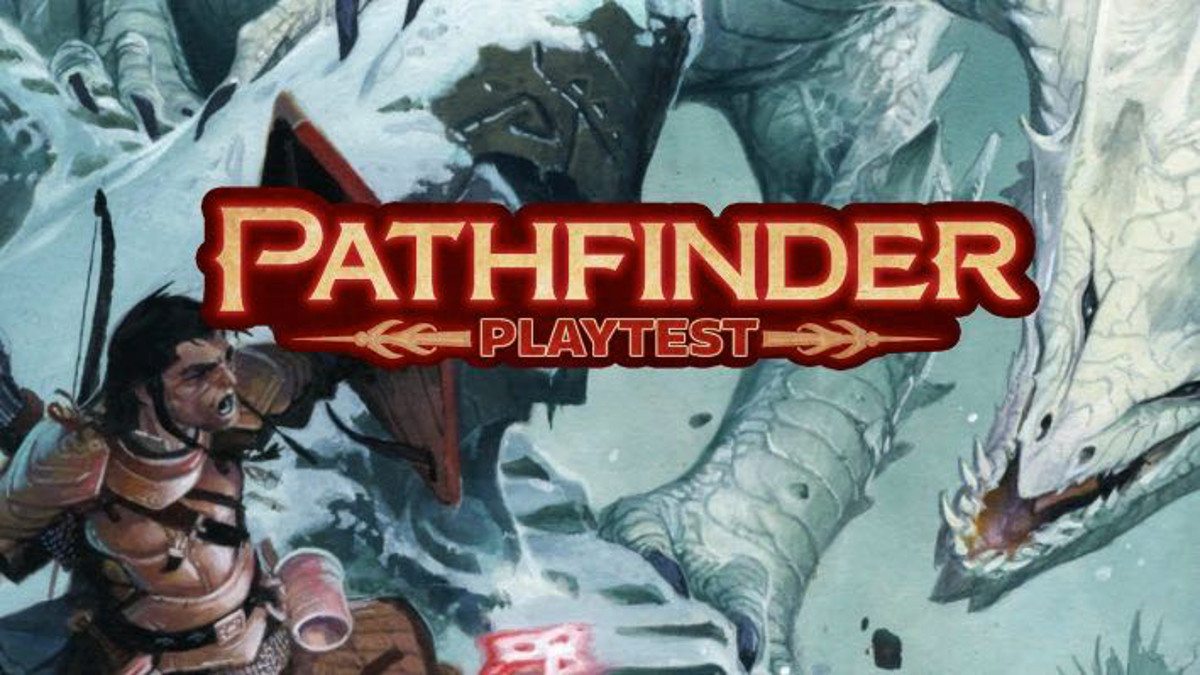I mentioned Machi Koro in our “best of Gen Con” post, and it’s quickly become a family favorite. Japanese for (roughly) “dice town,” Machi Koro is a fast-playing card-and-dice game about building up a little town. It’s easy to learn, and it’s cute!
At a glance: Machi Koro is for 2 to 4 players, ages 10 and up, and takes about 30 minutes to play. It will retail for $29.99, and although it’s not quite available yet, it should be ready soon. (Pandasaurus Games/IDW Games had a limited number at Gen Con that they were raffling off and giving to very lucky reviewers like me.) You can definitely play this one with kids younger than 10—my 7-year-old had no trouble learning the rules, though she still tends to hoard money instead of spending it.

Components:
- 2 six-sided dice
- 78 cardboard coin tokens (in 1s, 5s, and 10s)
- 108 cards: 72 Establishments, 12 Major Establishments, 16 Starting Landmarks, 8 Starting Establishments
My copy also came with the “Gaming Mega Store” Major Establishment, which was a bonus promo—I’m not sure if that will be included in most copies or not. [Update: I’ve been told that the Gaming Mega Store should be in most copies of the game at retail.]
The artwork is pretty cute, and the text on most of the cards is fairly easy to understand. (Some of the purple buildings, the Major Establishments, are a little more complicated.) In my set, the cards were slightly warped, but it wasn’t too much of an issue. The coins are nice punch-outs and easily distinguishable.
The box has a lot of room for expansion, but is kind of a weird arrangement. It doesn’t help you keep the cards organized, and I ended up using some rubber bands because otherwise the cards get completely jumbled if somebody picks up the box to look at the back.

How to Play
The goal is to be first to build your four starting landmarks in your town.
To begin, each player gets their two starting establishments (a Wheat Field and a Bakery) and their four starting landmarks (Train Station, Shopping Mall, Amusement Park, Radio Tower), plus three coins. All the other cards are placed in stacks in the center of the table, sorted by card type.

The basic idea is to collect money so that you can build your four big landmarks—the price is the coin in the lower left of each card. But in order to get that money, you’ll need to build other establishments in your town to earn more money.
On each turn, you roll a die, which may generate income for one or more players, and then you may build one establishment. The numbers printed at the top of each card show what die roll will activate it. They’re also color-coded to indicate whose turn it must be to activate. Blue cards activate on anyone’s turn; green cards activate on your turn only; red cards activate only on somebody else’s turn. The purple cards are Major Establishments—in this set they only activate on your turn, but they have special effects.

When an establishment activates, you will collect coins according to the text on the card. Most money comes from the bank, but some cards let you steal coins from other players as well. There are some establishments that are multipliers—for instance, the Cheese Factory pays out 3 coins for each cow icon that you have (currently only on the Ranch). Multiple copies of the same card will each pay out whenever that number is rolled.
Finally, once everyone has collected income, you may build one establishment from the center supply or complete one of your landmarks, flipping it over to the colored side. Establishments and landmarks may be built in any order. Completing landmarks not only gets you closer to winning the game, but also gives you access to their abilities. For instance, the Train Station lets you choose to roll two dice instead of one, which becomes necessary in order to roll the higher numbers (which tend to generate more income).
As soon as a player builds their fourth landmark, the game is over and that player wins.

The Verdict
What I love about Machi Koro is that it’s so simple to learn, and even though there’s a lot of luck involved, much of the gameplay is about deciding how to take advantage of the odds. Like Settlers of Catan, you can earn income even when somebody else rolls the dice, as long as you have the right numbers.
The pricing and effects of the buildings are well-designed. For instance, the Cheese Factory, which activates on a 7, costs more than the Furniture Factory, which activates on an 8, even though the payout amounts are pretty similar. Of course, you assume you’re going to roll 7 more often, but that’s not always the case. Blue establishments, which pay off no matter who rolls the number, cost more than similar green establishments, which only pay during your own turn.
There are only two red cards in the base game, but those are offensive—if other players roll that number, you get to steal coins from them. The more of them there are on the table, the less desirable it becomes to save up money for a big purchase, because chances are you might lose it all before you get to spend it. But if nobody’s buying red buildings, then you can slowly bank your way to a landmark.

The order in which you build landmarks can also be an interesting tactic. Most of the time everyone builds a train station, because it’s cheapest and lets you roll two dice. But if you invest in some of the higher numbered blue and red cards, you could make money when other players roll two dice, even if you’re only rolling one. The Radio Tower, which costs the most to build, also has the most powerful effect: one re-roll per turn. If you can manage to save up for that earlier, you get just a little more control during your turns—and then you don’t have to collect as much money later to finish off the game.
Since Machi Koro was one of the few games I picked up during Gen Con, I got a head start learning it and playing it, and my kids have really enjoyed playing it with me. The artwork is cute, it’s easy to learn, and the game plays quickly (as long as players don’t take too much time deciding what to buy next). It’s all about turning your town into a powerful economic engine.
Players who want something heavier or more strategic might not enjoy it as much, but it’s a perfect casual game, and makes a very nice warm-up for a game night. Setup is fast, and it takes me five minutes to explain the rules. (Plus, it’s the sort of game you can explain while you play.)
You’ll have to wait a couple weeks before it’s available in the US, but keep an eye out for Machi Koro. It may be a small town, but it’s definitely worth a visit.
Disclosure: GeekDad received a review copy of this game.





I played it and the expansion at Geekway to the West and immediately preordered. I love how easy it is to teach and start playing, that there are different paths to victory, the level of interaction with the red and blue cards, and the gambling feel of dice rolling.